This article embarks on an insightful journey through the realm of semiconductor rings, beginning with semiconductors’ basics and segueing into semiconductor rings’ distinct properties. It explores the integral role these rings play in modern electronics, from everyday gadgets to quantum computing. Overcoming manufacturing challenges and harnessing cutting-edge advancements to bolster semiconductor ring performance are vital steps forward. Speculations on future innovations lead to predictions of semiconductor rings’ impact on technology and society. The conclusion highlights the untapped potential that beckons further exploration in this transformative tech field.
What is: Unveiling the World of Semiconductor Rings
The age of electronics is founded firmly upon the shoulders of semiconductors; those remarkable materials whose conductive properties lie somewhere between the robust conductance of metals and the staunch resistance of insulators. These remarkable substances have given rise to the digital revolution, found in everything from the computer you’re using to read this, to the phone in your pocket, and the increasingly smart appliances within your home.
As we advance technologically, there’s a continuous push to break boundaries and explore novel forms of semiconductors. Enter the fascinating realm of semiconductor rings – a relatively new kid on the block with properties that could seem torn straight from the pages of science fiction. These donut-shaped wonders are not your everyday semiconductors; they boast a unique topology that endows them with extraordinary quantum mechanical properties far removed from their planar cousins.
Quite differently from the slab-like structure of traditional semiconductors, semiconductor rings encapsulate a loop of material where electrons can traverse around the loop, akin to cars on a racetrack. This distinct form factor enables the electrons within to display behaviors governed by the principles of quantum physics, making it a hotbed for numerous experiments and potential revolutionary applications.
Due to this unique structure, semiconductor rings act as an excellent playground to observe phenomena such as the Aharonov-Bohm effect, where the presence of a magnetic field can alter the way electrons wave around the ring, despite not being directly exposed to any magnetic force. This mesmerizing dance of electrons, orchestrated by external magnetic fields, opens the door to a plethora of uses, especially in the field of quantum computing and molecular electronics.
Semiconductor rings stand on the precipice of what could be the next quantum leap in technological advancement. This introductory peek into their world is just the beginning; as we venture further into exploring their properties, be prepared to unravel how they might reshape our understanding and interaction with the very fabric of electronic devices. Together, let’s demystify these complex structures, using real-world examples and case studies, and delve into the practical and potential impact that could very well define the future of technology.

The Fundamentals of Semiconductor Rings
In the groundbreaking world of semiconductors, the emergence of semiconductor rings has been a revelation, propelling the boundaries of what we thought was possible. These innovative structures take the core principles of semiconductor physics and spin them into a shape that is as fascinating as it is functional. But what exactly are semiconductor rings, and how do they differentiate themselves not only in form but in function from their planar counterparts?
What are Semiconductor Rings
At its essence, a semiconductor ring is a closed loop made from semiconductor material. Imagine taking a thin semiconductor wire and bending it until both ends meet, forming a perfect circle or ring. This configuration allows electrons and holes (the absence of an electron, acting as a positive charge carrier) to move freely around the loop, providing a unique playground for observing quantum mechanical effects.
Such structures are not just a theoretical exercise; they’re manufactured using sophisticated fabrication techniques such as molecular beam epitaxy (MBE) or lithography. MBE, for instance, grows semiconductor crystals layer by atomic layer on a substrate, allowing for precise control over the dimensions and composition of the ring. This meticulous process ensures that the semiconductor rings can exhibit the desired quantum properties essential for emerging technologies.
Physical Properties and Manufacturing Marvels
The physical properties of semiconductor rings are a marvel of quantum mechanics. For example, the presence of a magnetic field through the center of the ring (without actually touching the material) can influence the behavior of electrons due to the Aharonov-Bohm effect. This effect can lead to quantum interference patterns, where the wave-like nature of electrons around the ring is modulated, producing variations in the ring’s conductivity depending on the magnetic field’s strength.
The manufacture of these minuscule rings is no less impressive. Advancements in nanotechnology have enabled the fabrication of semiconductor rings with diameters as small as a few nanometers. Such precision requires sophisticated equipment and a deep understanding of the material properties at play. Techniques like electron beam lithography, which allows for the etching of incredibly fine patterns onto semiconductor materials, have been pivotal in the development of semiconductor rings.

Beyond the Plane: Semiconductor Rings vs. Traditional Semiconductors
Comparing semiconductor rings with traditional, planar semiconductors reveals a fascinating divergence in terms of their respective capabilities and applications. While traditional semiconductors have been the backbone of electronic devices for decades, enabling the development of transistors, diodes, and integrated circuits, they operate within the boundaries of classical physics.
Semiconductor rings, by contrast, unlock the potential of quantum mechanics. Their unique topology allows for the exploration of phenomena that are not possible in two-dimensional structures. For example, the ability of semiconductor rings to exhibit quantum coherence over relatively large distances could pave the way for entirely new types of quantum computing qubits, leapfrogging beyond the limitations of traditional semiconductor-based qubits.
Real-World Example: Quantum Rings in Computing
Consider the case of a leading-edge research institution that set out to create qubits based on semiconductor rings. By leveraging the unique properties of these rings, they developed a qubit that could potentially operate at higher temperatures than existing qubits, which often require extremely cold conditions. This breakthrough exemplifies how understanding and harnessing the fundamentals of semiconductor rings can lead to concrete advancements in technology, making the quantum future more accessible.
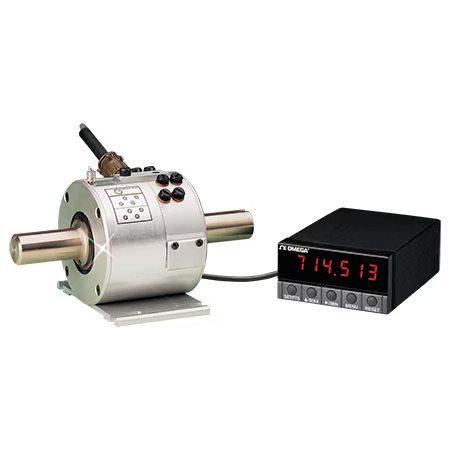
The Role of Semiconductor Rings in Modern Electronics
As semiconductor technology evolves, semiconductor rings emerge as a pivotal enabler of future electronic devices. This chapter delves into how these unique structures are not just scientific curiosities but are indeed key components in a range of advanced electronics. From enhancing everyday consumer electronics to revolutionizing fields like optical devices and quantum computing, semiconductor rings are increasingly integral.
Semiconductor Rings in Consumer Electronics
In the realm of consumer electronics, semiconductor rings are beginning to make their mark, albeit in less obvious ways than traditional semiconductors. Consider, for instance, the sensors found in high-end digital cameras. Semiconductor rings can be utilized here to provide more sensitive and accurate magnetic field sensors, which, in turn, enhance image stabilization and focusing capabilities. This application leverages the quantum properties of the rings, such as the Aharonov-Bohm effect, to detect and measure magnetic fields with exceptional precision.
Enhancing Optical Devices with Semiconductor Rings
Optical devices, particularly those relying on the manipulation and detection of light at the quantum level, can gain significantly from the incorporation of semiconductor rings. These applications often exploit the photonic properties of semiconductor materials, but with the added twist brought about by the rings’ topology.
For example, semiconductor ring lasers, which are a type of laser where the gain medium is arranged in a ring, offer a range of operational advantages including the ability to emit light in multiple directions and a higher quality of laser beam coherence. Such technologies are critical in applications ranging from optical communications to medical devices, where precise and reliable laser operations are essential.
Quantum Computing: The Frontier for Semiconductor Rings
Perhaps the most transformative role of semiconductor rings lies in the field of quantum computing. Quantum computers promise to revolutionize our computational capabilities, handling tasks in seconds that would take traditional computers millennia. Semiconductor rings are at the forefront of this, acting as qubits (quantum bits) that are the fundamental building blocks of quantum computers.
The very properties that make semiconductor rings fascinating, such as their ability to harness the Aharonov-Bohm effect, also make them exceptionally well-suited for quantum computing. They can maintain quantum coherence over relatively long periods and under less stringent conditions than other types of qubits, which could eventually lead to more stable and scalable quantum computers. Real-world applications include solving complex mathematical problems, optimizing large systems, and even designing new materials and drugs.
Case Study: Semiconductor Rings in Superconducting Quantum Computers
A notable application of semiconductor rings is found in the development of superconducting quantum computers. For instance, a leading tech company integrated semiconductor ring-based qubits into their quantum processors to enhance performance metrics like coherence time and error rates. This integration not only demonstrated improved stability but also showcased the potential scalability of this technology.
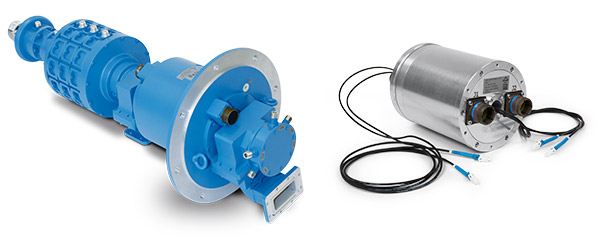
Quantum Leap – Semiconductor Rings in Quantum Computing
The journey into quantum computing unveils a landscape where the laws of physics operate differently, and traditional computing’s binary restrictions are transcended. At the heart of this transition are semiconductor rings, whose potential to reshape the computing paradigm is vast and profound. This chapter explores their revolutionary role in quantum computing, promising unparalleled processing power and a new era of security.
Unveiling the Quantum Potential of Semiconductor Rings
Semiconductor rings represent a bridge between the macroscopic world we inhabit and the enigmatic realm of quantum mechanics. Their introduction into quantum computing has been marked by a series of groundbreaking discoveries, each hinting at the untapped potential locked within their atomic structures. By exploiting quantum phenomena such as superposition and entanglement, semiconductor rings can drastically enhance the processing capabilities of quantum computers.
Leveraging Quantum Mechanics for Advanced Computing
The core principle of quantum computing lies in its use of qubits, which, unlike classical bits that are either 0 or 1, can exist in multiple states simultaneously thanks to superposition. Here, semiconductor rings come into play as an ideal platform for qubits due to their coherent quantum state properties over relatively long distances and timescales.
Crucial to this is their ability to encapsulate quantum information in a way that is both stable and less susceptible to the decoherence that plagues many quantum systems. The Aharonov-Bohm effect, a quantum phenomenon observed in semiconductor rings, allows for precise control and manipulation of electronic states, offering a pathway to more robust and reliable quantum computing architectures.
Revolutionizing Computing with Unprecedented Processing Power
Imagine solving complex problems that today’s supercomputers would take centuries to crack, completed in mere seconds. This is the promise of quantum computing with semiconductor rings. From drug discovery, where quantum computers can simulate complex molecules, to optimizing vast logistics networks in ways currently unimaginable, the potential applications are as broad as they are transformative.
Enhancing Security in the Quantum Era
Moreover, the advent of quantum computing heralds a new era of cybersecurity. Semiconductor rings can enable quantum encryption technologies such as Quantum Key Distribution (QKD), making data transmission theoretically impervious to eavesdropping. In an age where data breaches are increasingly common, the significance of quantum-enhanced security cannot be overstated.
Case Study: Breakthrough in Quantum Error Correction
A pertinent example of semiconductor rings’ potential is seen in recent advancements in quantum error correction—a critical obstacle in quantum computing development. Researchers have demonstrated that by arraying semiconductor rings in a lattice structure, they can create a stable, error-corrected qubit network. This approach, leveraging the unique properties of semiconductor rings, marks a substantial step forward in making quantum computing viable for practical applications.
The Challenges Surrounding Semiconductor Rings
The advent of semiconductor rings ushers in a future brimming with technological promise. Nevertheless, this promise is intertwined with intricate challenges. This chapter provides a detailed analysis of the obstacles faced in the manufacturing and application of semiconductor rings, sharing insights into the current limitations and exploring the strategies devised to navigate these hurdles.
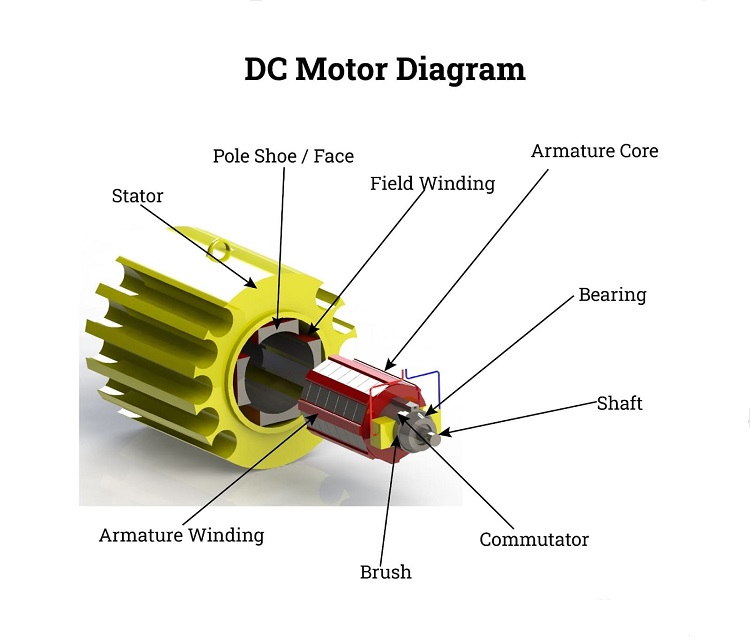
The Manufacturing Maze: Precision and Purity at the Nanoscale
Nanofabrication Nuances
The creation of semiconductor rings is an extraordinary feat of nanotechnology, necessitating atomic-level precision. The primary challenge lies in the scaling down of these devices to the nanometer scale while retaining their unique quantum properties. Issues such as the inconsistency in size and shape can have profound effects on the behavior of semiconductor rings, resulting in unpredictable electronic and quantum characteristics.
Harnessing High-Purity Materials
Another critical aspect is material purity. Even minuscule levels of impurities or defects within the semiconductor can lead to significant quantum decoherence, undermining the functionality of the semiconductor rings. Achieving the high-purity materials required is a complex and costly process, often involving sophisticated crystal growth techniques and meticulous quality control measures.
Case Study: Innovations in Nanolithography
Tackling the manufacturing challenges, breakthroughs in electron beam lithography and other nanolithography methods have shown promise. A case study of one research institution reveals how their novel approach to nanolithography has improved the uniformity and scalability of semiconductor ring production. Their technique has been instrumental in producing rings with the precision necessary for quantum computing applications, signaling a major step toward technological viability.
Application Hurdles: Scaling the Quantum Divide
Quantum Decoherence: The Achilles’ Heel
In the realm of application, maintaining quantum coherence is vital. Semiconductor rings are susceptible to decoherence, where interaction with the environment causes the loss of the quantum state, imposing a significant challenge for their role in quantum computing and highly-sensitive sensors. Researchers are hard at work to understand these interactions better and devise isolation techniques to shield the rings from disruptive external influences.
Integrating with Existing Systems
The integration of semiconductor rings into existing technology platforms presents another major challenge. Developing interfaces that allow semiconductor rings to communicate and work in tandem with classical systems is crucial for their wide-scale adoption yet remains a complex task that requires innovation in both design and materials.
Case Study: Overcoming Thermal Noise
A compelling example of overcoming application challenges is highlighted in the success of an up-and-coming technology firm. They have developed a cooling mechanism to subdue thermal noise—a prominent cause of decoherence in semiconductor rings. By implementing this mechanism, they’ve succeeded in extending the coherence times of their semiconductor ring-based qubits, thereby enhancing their practical utility in quantum computing systems.
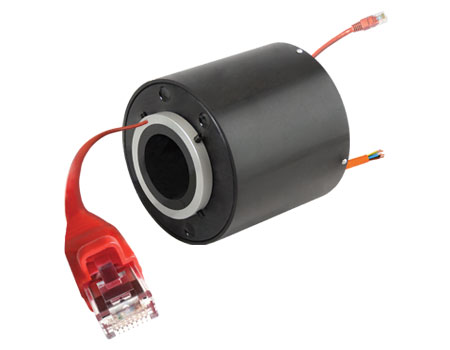
Cutting-edge Advances in Semiconductor Ring Technology
The relentless pursuit of innovation within the realm of semiconductor rings marks a thrilling chapter in the narrative of quantum computing and advanced electronics. This chapter delves into the forefront of research and development, shedding light on groundbreaking materials and methodologies poised to redefine what’s possible with semiconductor ring technology.
Pioneering Research: Quantum Horizons Expanded
Quantum Computing Breakthroughs
At the forefront of quantum computing, semiconductor ring technology is undergoing revolutionary advancements. Researchers have recently achieved a milestone in creating semiconductor rings that can operate at higher temperatures, reducing the need for complex and expensive cooling systems. This development not only makes quantum computing more accessible but also opens the door to portable quantum computing devices.
Innovations in Telecommunications
In the telecommunications sector, semiconductor rings are being leveraged to develop ultra-fast, energy-efficient optical switches. These switches promise to significantly enhance the speed and capacity of global data networks, making them crucial for the future of internet infrastructure.
Case Study: Enhancing Qubit Stability
A notable case study involves a collaboration between a renowned university and a leading tech company. Their joint research project succeeded in developing a novel semiconductor ring structure that drastically improves qubit stability and coherence times. This advancement is a significant leap forward, potentially accelerating the advent of commercially viable quantum computing systems.
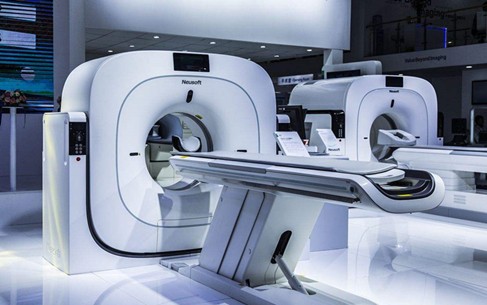
Material Marvels: Pathways to Performance Enhancement
Emerging Materials
The discovery of new materials plays a pivotal role in advancing semiconductor ring technology. Two-dimensional materials, such as graphene and transition metal dichalcogenides, have shown considerable promise. Their unique properties, including superior electron mobility and flexibility, offer immense potential for creating more efficient and versatile semiconductor rings.
Innovating Fabrication Techniques
Parallel to material advancements, breakthroughs in fabrication techniques are also underway. One such innovation involves using focused ion beams to etch semiconductor rings with unprecedented precision. This method allows for the creation of smaller, more densely packed rings, essential for scaling up quantum computing systems.
Case Study: Superconducting Semiconductor Rings
A pioneering development in the field is the introduction of superconducting materials into semiconductor ring fabrication. This case study highlights how a research team successfully integrated superconducting properties with semiconductor rings, drastically reducing energy loss and enhancing quantum efficiency. The implications of this development extend beyond quantum computing, offering potential advantages in energy transmission and magnetic sensing technologies.
The Future is Ring-Shaped – Predictions for Semiconductor Rings
Venturing into the enticing realm of possibility, this chapter audaciously speculates on the burgeoning future applications and innovations of semiconductor rings. It navigates through the potential transformative impacts that this technology may impart on both technological spheres and societal structures at large, casting a visionary eye on the horizon of the not-so-distant future.
Innovative Frontiers: Semiconductor Rings as a Catalyst
A Leap in Quantum Computing
Quantum computing is predicted to undergo monumental shifts, thanks to semiconductor ring technology. Experts forecast the creation of qubits that are not only highly stable but also able to operate at room temperature, slashing the barriers to entry for quantum computing. This could lead to the proliferation of quantum computers, making them as commonplace as the desktop computers of today.
Revolutionizing Sensors and Metrology
In the world of precision measurement and sensors, semiconductor rings are touted to play a game-changing role. Imagine sensors so sensitive that they can detect gravitational waves or measure pollutants at the molecular level, providing real-time data with unprecedented accuracy. The societal implications are vast, ranging from improved environmental monitoring to breakthroughs in medical diagnostics.
Case Study: Semiconductor Rings in Space Exploration
A real-world example that can be glimpsed is their application in space exploration. Semiconductor ring sensors, with their tiny form factors and quantum precision, could significantly enhance the capabilities of spacecraft and satellites. A case study might highlight a mission where these sensors played a critical role in navigating interstellar space or detecting exoplanets.
Future Vistas: Technology Shaped by Tiny Rings
Ubiquitous Quantum Networks
Looking beyond individual quantum computers, semiconductor rings could enable the establishment of quantum networks. These networks would facilitate uncrackable communication systems and a new level of connectivity, reshaping the way information is shared and secured on a global scale.
Disruptive Energy Technologies
The efficiency of semiconductor rings also introduces the prospect of major advances in energy technologies. With the potential to manage power at quantum levels, semiconductor rings could dramatically improve the efficiency of photovoltaic cells, leading to cleaner, more sustainable energy sources.
Case Study: Quantum Medical Imaging
One tangible example could be the utilization of quantum imaging techniques in healthcare. By exploiting the sensitivity of semiconductor rings, medical imaging could be enhanced to show finer details without increasing exposure to radiation, thus revolutionizing diagnostic procedures.
The Infinite Potential of Semiconductor Rings
As we close this explorative journey through the realms of semiconductor ring technology, it becomes unequivocally clear that these minuscule structures carry the weight of immense potential within the contemporary tech landscape. Semiconductor rings, a synthesis of quantum mechanics and material science, stand on the precipice of reshaping our technological, societal, and even ecological future.
The significance of semiconductor rings in today’s technology sphere cannot be overstated. They are at the heart of groundbreaking advancements in quantum computing, telecommunications, sensors, and beyond. Their unique properties have paved the way for innovations that were once confined to the realm of science fiction. From enabling quantum computers to operate at room temperature to revolutionizing medical diagnostics with quantum imaging, semiconductor rings have begun to redefine the boundaries of possibility.
However, the journey is far from complete. The true expanse of what semiconductor rings can achieve lies stretched out before us, a vast uncharted territory brimming with potential. It is a call to action — a clarion call for bold exploration and relentless innovation.
A Beacon for Researchers
For researchers, the challenge is as exhilarating as it is monumental. Beyond the horizon of current knowledge and application, there exists the promise of undiscovered breakthroughs and applications of semiconductor rings. Diving into the unexplored dimensions of this technology could unlock new principles of quantum mechanics, lead to the discovery of novel materials, and even spur the development of entirely new fields of study. The academic and research community is beckoned to redouble their efforts, fueled by curiosity and driven by the potential to contribute to transformative advancements.
Industries: A Frontier for Innovation
Industries, too, have a pivotal role to play. The leap from laboratory breakthroughs to real-world applications requires not just vision but the audacity to innovate and invest in new technologies. The semiconductor industry, telecommunications, healthcare, and environmental sectors — all stand to benefit immeasurably from embracing semiconductor ring technologies. Forging partnerships with academia, investing in research and development, and fostering an ecosystem that encourages innovation are critical steps toward unlocking the full potential of semiconductor rings.
Towards a Collaborative Future
The call to action extends beyond the confines of individual sectors or disciplines. It is a collective endeavor that demands collaboration across industries, academia, governments, and global institutions. Sharing knowledge, pooling resources, and aligning efforts can accelerate the pace of innovation and ensure that the benefits of semiconductor ring technology are realized on a global scale.
As we stand at the threshold of this promising future, let us commit to pushing the boundaries of what we believe is possible. The infinite potential of semiconductor rings beckons us towards a horizon filled with breakthroughs that could transform our world. The path forward is one of exploration, collaboration, and unwavering pursuit of innovation.
Semiconductor rings encapsulate the essence of human ingenuity and the relentless pursuit of progress. They remind us that within the tiniest structures can lie the keys to unlocking vast and transformative powers. As we move forward, the journey of discovery and innovation continues — with semiconductor rings lighting the way toward a future abundant with possibilities. Our collective endeavor to explore and harness this potential will undoubtedly shape the fabric of the coming decades, marking an era where the infinite becomes within reach.

